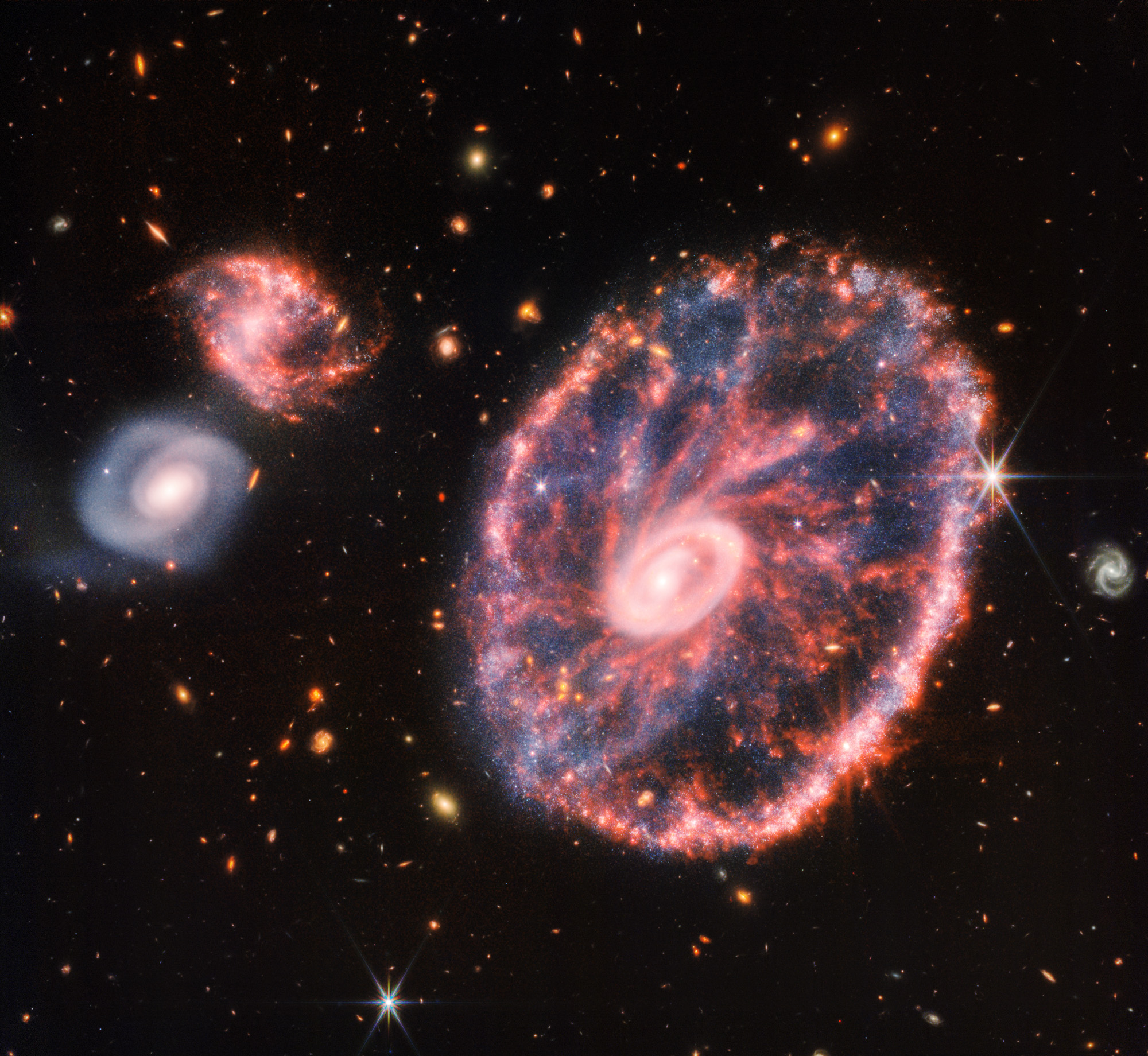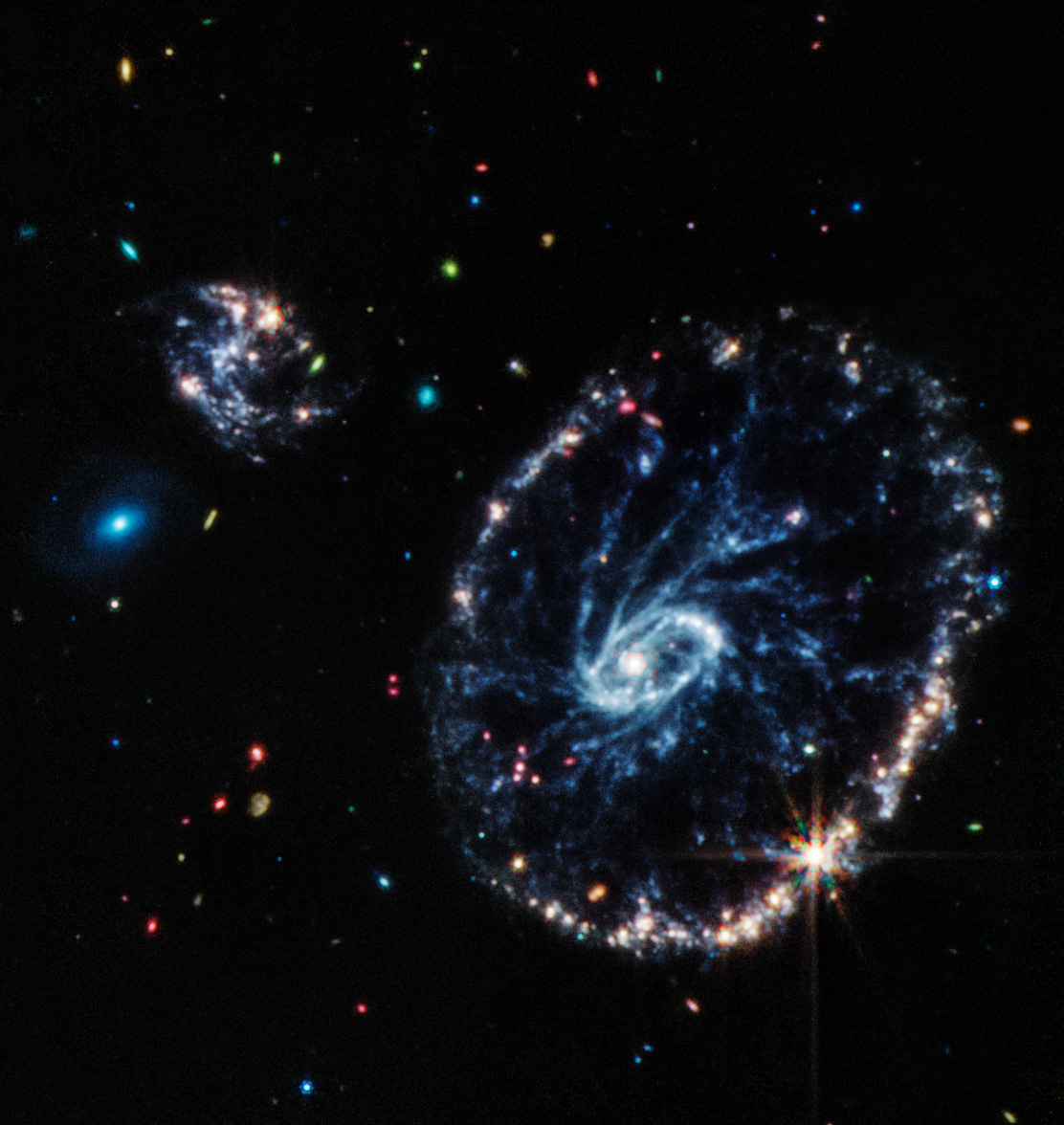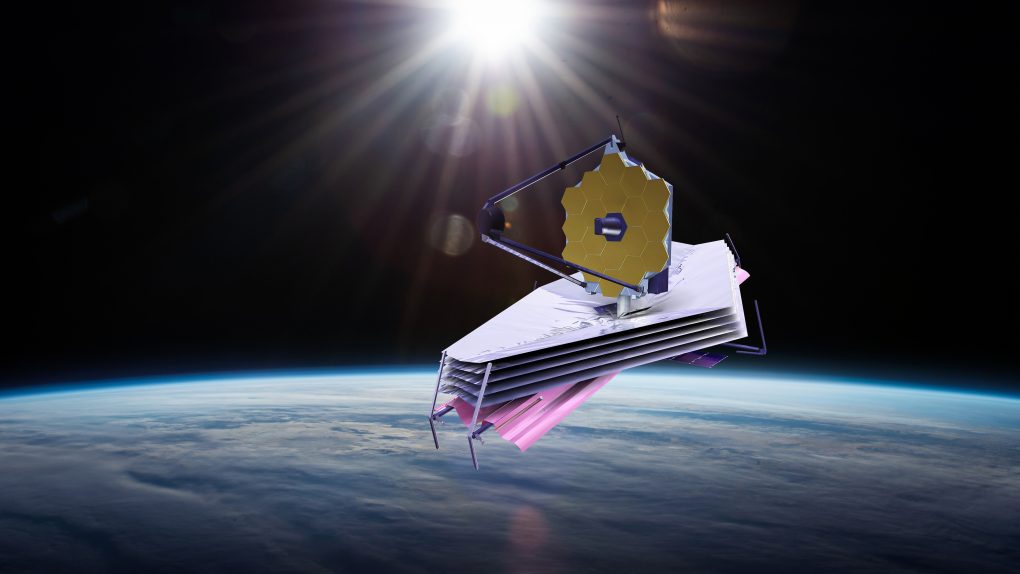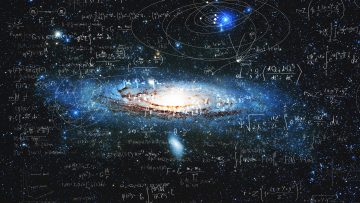The James Webb Space Telescope has captured a new, dazzling image of the Cartwheel Galaxy. This rare ring galaxy is roughly 500 million light-years away in the Sculptor constellation. NASA says the galaxy is “a rare sight.” This new galaxy image does more than just show off its beautiful appearance. It also gives us insight into how it has changed over billions of years.
Webb captures impressive image of the Cartwheel Galaxy

The Cartwheel Galaxy gets its name thanks to its insane appearance, which looks similar to a wagon wheel. This appearance, however, isn’t natural. Instead, this rare ring galaxy was formed when a large spiral galaxy and a smaller galaxy collided. The collision created a cascade of smaller events between the two.
Perhaps the collision’s most notable effect on this rare galaxy is its shape and structure. The Cartwheel Galaxy includes two rights, a brighter inner ring, and a colorful outer ring. NASA says that the two rings expand outward from the center of the galactic collision. Think of them like ripples in a pond after you toss a rock into the serene water.
Because of its unique design, astronomers refer to the Cartwheel Galaxy as a ring galaxy. And it’s actually one of the less common galaxy types we’ve found in the universe thus far.
Two rings are better than one

What is interesting about this ring galaxy is that each ring is vastly different. The inner ring of the Cartwheel Galaxy is filled with hot dust and the brightest spots in the image are home to young star clusters, NASA notes. The outer ring has expanded over the past 440 million years. Supernovas and star formations dominate this ring.
This outer ring is also fueling ongoing star formations as it expands. That’s because the ring plots into surrounding gas and triggers the formation of new stars. So far, Webb’s observations of the Cartwheel Galaxy have shown it to be in a very transitory stage. It will continue to expand and transform for millions of years to come.
Webb’s image of the galaxy also provides some insight into its past, and we can continue to watch as it changes in the future.








